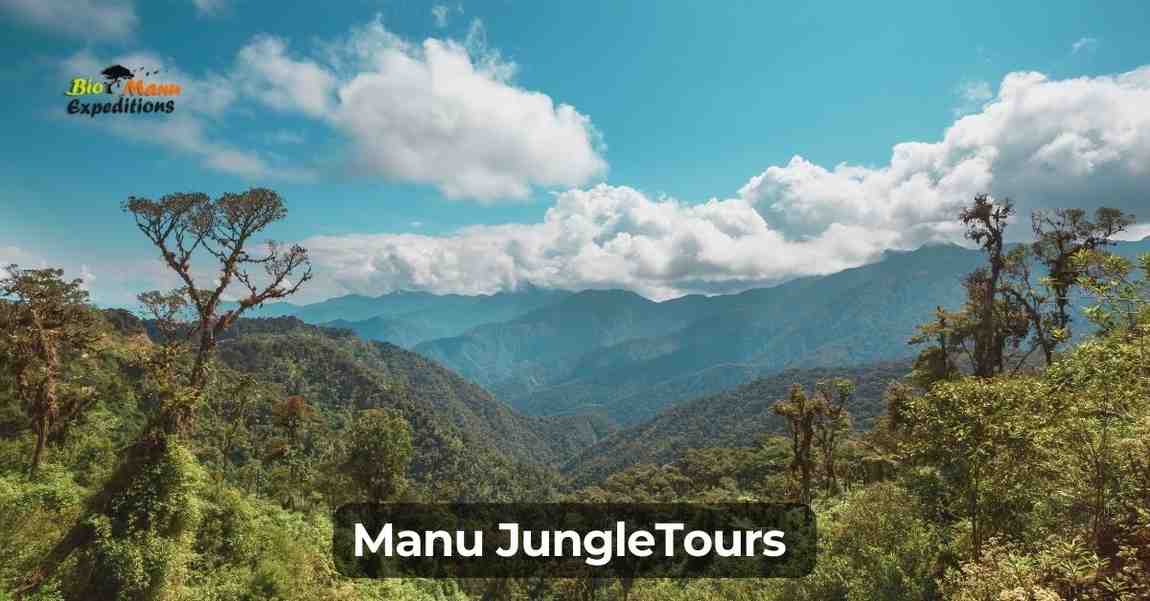


Peru is a land of wonders, and among its many attractions, Manu National Park stands out as one of the most pristine and awe-inspiring destinations.
Located deep within the Peruvian heart, the Manu Biosphere Reserve is a biodiversity treasure and home to rich cultural heritage. Through eco-tourism operators, Manu Jungle Tours have been one of the gateway accesses for adventure seekers wanting to fully immerse in this ecological haven. However, such tours extend far beyond the act of discovery since they become very important vectors in promoting conservation and sustainable tourism. Manu Jungle Tours: A good influence of tourism due to a harmonious balance in environmental protection, community involvement, and visitor education.
The Manu Biosphere Reserve consists of over 1,000 bird species and jaguars, giant otters, and several other animals that are unique within this biosphere. Manu Jungle Tours implement the principles of eco-tourism in respect of the many species and habitats.
Tour operators follow strict guidelines, such as limiting group sizes, adhering to designated trails, and maintaining a safe distance from wildlife. These measures minimize the environmental footprint of tourism while allowing visitors to witness the beauty of nature responsibly. Additionally, many tour companies contribute a portion of their profits to conservation programs, including habitat restoration and anti-poaching initiatives.
One of the cardinal principles of sustainable tourism is empowering the local community; Manu Jungle Tours excel in the same area as they work mainly with the native communities by contracting them to assist as guides, cooks, and representatives of the various cultures to interact with tourists. These activities can provide locals with an opportunity for income-generating activities, especially when offering and sharing traditional know-how and social practices.
For example, indigenous guides bring a wealth of expertise about the forest’s ecosystems, medicinal plants, and wildlife behaviors. Their participation enriches the tourist experience while fostering a sense of pride and ownership within the community. Furthermore, some tour operators invest in community development projects, such as building schools, healthcare facilities, or clean water systems, creating a lasting positive impact.
Manu Jungle Tours are crafted to educate its visitors on why conservation is such an important theme. Guided hikes, boat rides, and cultural interactions open the eyes and minds of travelers with regard to delicate balances in Amazonian ecosystems under threat from logging, illegal mining, and the impacts of global climate change.
Many tours take one to research stations where scientists examine the biodiversity in the region. This gives a tourist an experience of the efforts exerted in safeguarding the Manu Biosphere Reserve. Raising awareness of the issue among travelers inspires the latter to follow sustainable practices and be advocates of environmental preservation.
Sustainable tourism in Manu also makes it possible to remove one of the carbon footprints associated with travel. Whenever travel takes place, many operators use eco-friendly places of stay such as lodges powered by solar energy or built using local materials. Its design contributes to easy blending into their surrounding environment hence not disturbing the natural landscape.
Another area of sustainability in the reserve is transportation. Many tours are made using non-motorized boats or fuel-efficient vehicles that allow travel along the rivers and trails of the jungle. Furthermore, operators encourage visitors to pack lightly, use biodegradable toiletries, and avoid single-use plastics, which minimizes the environmental impact.
A number of Manu Jungle Tours involve the participation of citizen science activities that visitors can join. Such citizen science projects involve birdwatching and documenting species, helping in data collection processes by researchers, among other things. This type of activities aids scientific studies, and also enriches tourists about their environment.
Manu Jungle Tours are a perfect example of how tourism can be a tool for conservation and sustainable development. For travelers searching for a meaningful adventure, Manu Jungle Tours provide much more than breathtaking landscapes and unique wildlife encounters. They create opportunities to help protect one of the world’s most crucial ecosystems. As sustainable tourism gains momentum, Manu Peru emerges as an iconic destination for travelers seeking both enrichment and responsibility in their journeys.
In partnership with organizations like Bio Manu Expeditions, these tours continue to demonstrate the harmony between tourism and environmental stewardship. Together, they are shaping a future where the beauty and biodiversity of the Manu Biosphere Reserve remain intact, offering an unforgettable experience to visitors while safeguarding its legacy.
